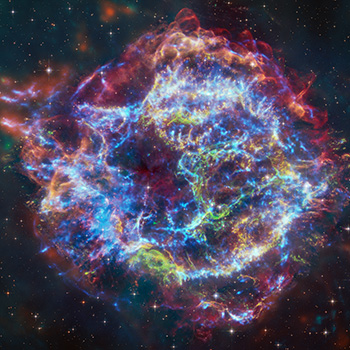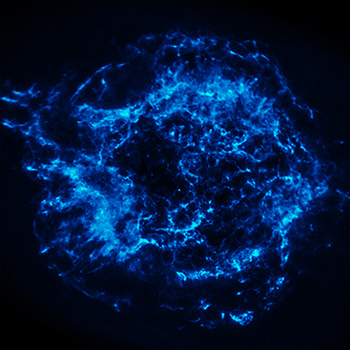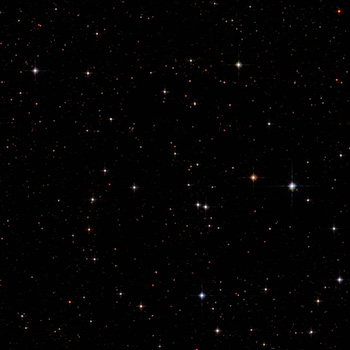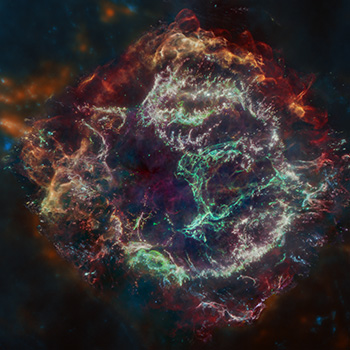
Cassiopeia A Multiwavelength Sonification
This sonification of Cas A features data from Chandra as well as NASA’s James Webb, Hubble, and retired Spitzer space telescopes. The scan starts at the neutron star at the center of the remnant, marked by a triangle sound, and moves outward. Astronomers first saw this neutron star when Chandra’s inaugural observations were released 25 years ago this week. Chandra’s X-rays also reveal debris from the exploded star that is expanding outward into space. The brighter parts of the image are conveyed through louder volume and higher pitched sounds. X-ray data from Chandra are mapped to modified piano sounds, while infrared data from Webb and Spitzer, which detect warmed dust embedded in the hot gas, have been assigned to various string and brass instruments. Stars that Hubble detects are played with crotales, or small cymbals.
Access more information & file formats on this sonification
The Chandra sonifications were led by the Chandra X-ray Center (CXC), with input from NASA's Universe of Learning. The sustained collaboration was driven by visualization scientist Dr. Kimberly Arcand (CXC), astrophysicist Dr. Matt Russo and musician Andrew Santaguida (both of the SYSTEM Sounds project). For other sonifications, please see their linked pages.
cxcpub@cfa.harvard.edu
617-496-7941
60 Garden Street,
Cambridge, MA 02138 USA
Art Direction/Design: Kristin DiVona
Web Developers: Khajag Mgrdichian
& Kelly T.S. Williamson
Chandra X-ray Center, Operated for NASA by the Smithsonian Astrophysical Observatory. This site was developed with funding from NASA under contract NAS8-03060 | Privacy | Accessibility
Additional support from NASA's Universe of Learning (UoL). UoL materials are based upon work supported by NASA under award number NNX16AC65A to the Space
Telescope Science Institute, working in partnership with Caltech/IPAC, Jet Propulsion Laboratory, and Smithsonian Astrophysical Observatory.




